If you've been driving for any length of time, you've no doubt seen trucks and SUVs equipped with metal bars that protrude from the front bumper. But if you aren't much of a car person, you might not understand the differences in these pieces of equipment. So, which is best, a bull bar or a brush guard? For your convenience, we brought you the answer.
A bull bar is a smaller piece of equipment that only covers the center of a vehicle's front end, and it offers a limited amount of protection to the bumper in the event of a minor collision. A brush guard is a larger piece of equipment that covers the entire front end of a vehicle, and it offers a substantial amount of protection in the event of a more serious collision.
A bull bar is ideal for those who are primarily interested in giving their vehicle a more rugged aesthetic. A brush guard is ideal for those who want to significantly reinforce the front end of their vehicle for added collision and brush protection.
If you still have some questions about bull bars and brush guards, don't worry. In this post, we'll take a closer look at what makes these two pieces of equipment different. We'll also talk about whether bull bars are illegal, whether bull bars and brush guards are effective at protecting the vehicle in the event of a deer strike, and much more. Without further ado, let's get into it!
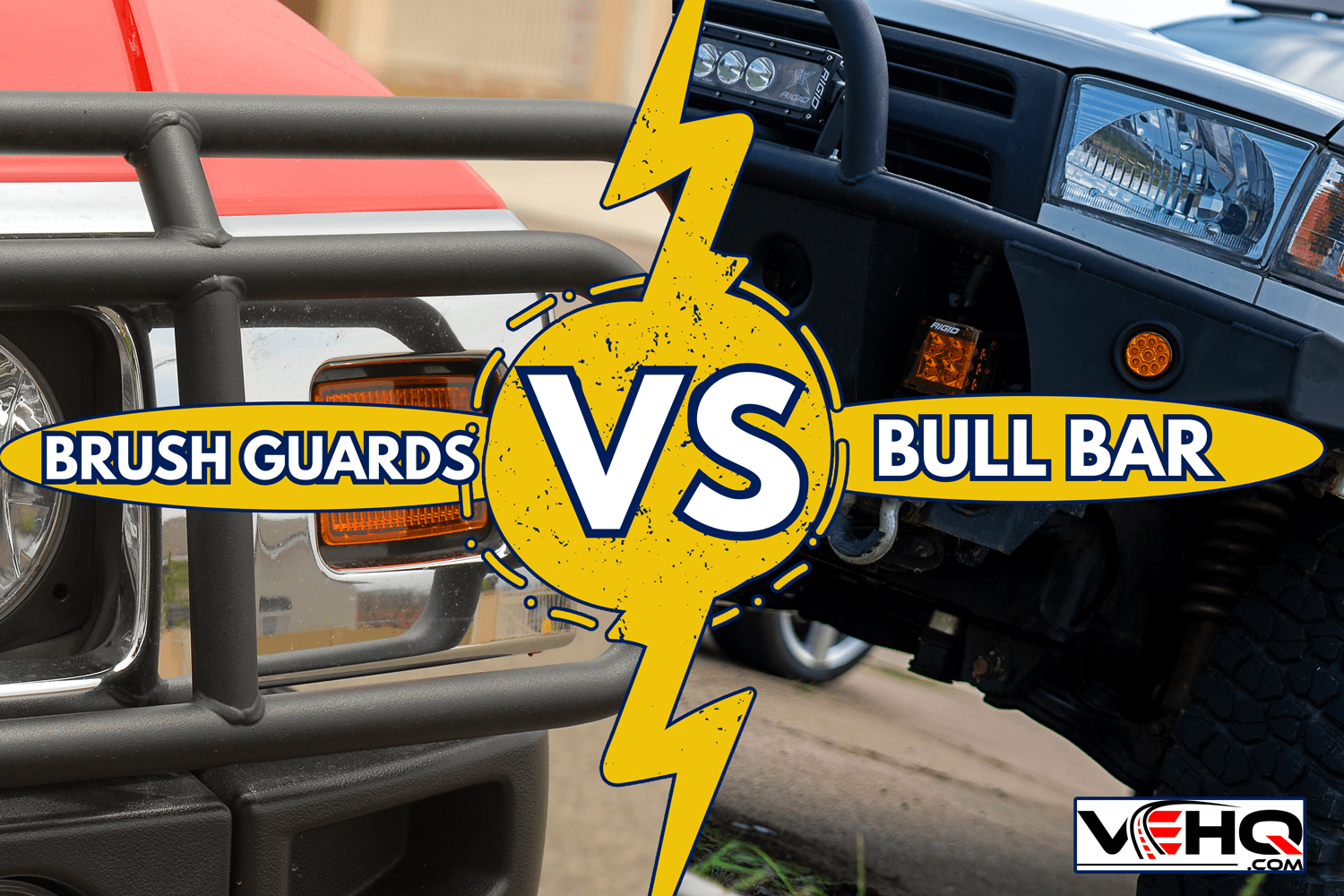
The Difference Between Bull Bars And Brush Guards
Before we talk more about which of these pieces of equipment is right for you, we'll discuss the differences between them in greater detail.
Bull Bars
A bull bar is a smaller piece of metal that covers the center of a vehicle's front end. Most bull bars feature a curved metal tube that only extends upward to cover the innermost portion of the vehicle's bumper.
However, some bull bars, sometimes referred to as push bars, extend farther up to cover the center portion of the vehicle's grille. These kinds of bull bars are often seen on police vehicles.
Since bull bars, only cover a small portion of the vehicle's front end—namely the bumper—they will only provide a minor amount of protection in a small collision.
Though bull bars are quite simple, they come in different configurations. For instance, there are bull bars on the market with built-in lights and winches.
Brush Guards
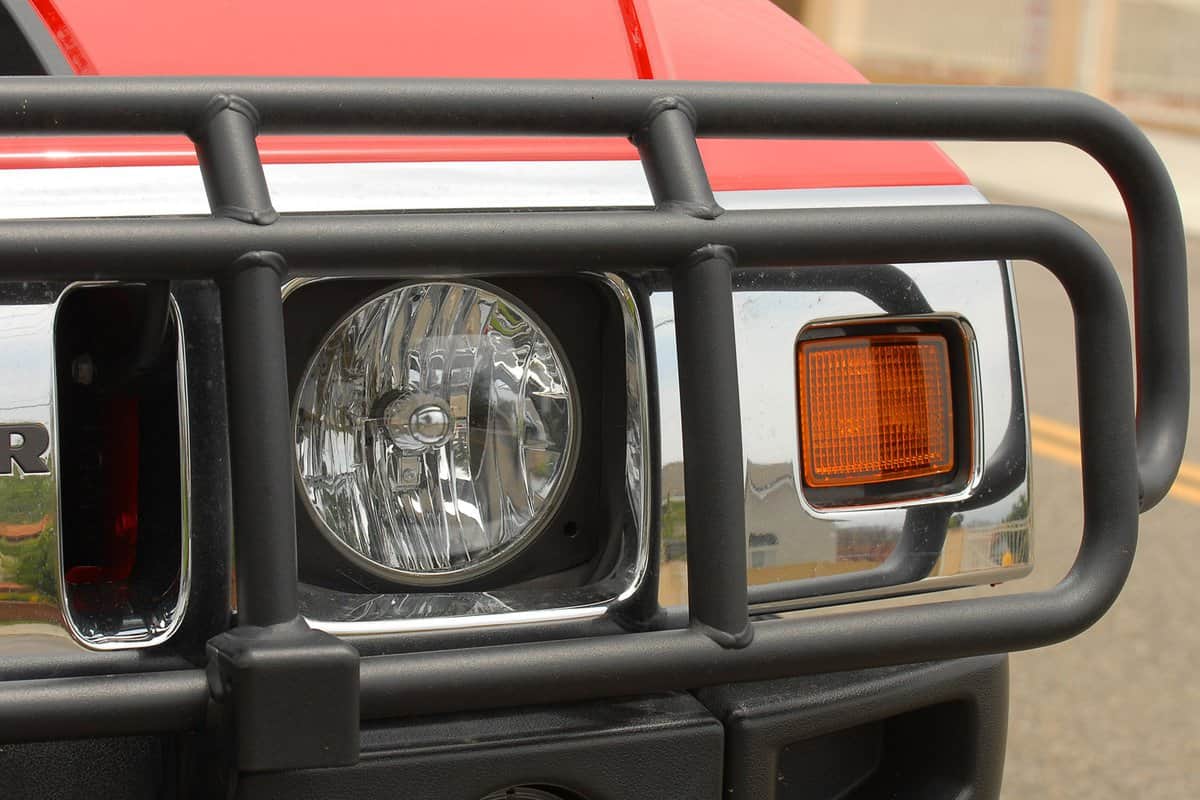
Brush guards, on the other hand, are significantly larger than their smaller counterparts. Brush guards attach to the vehicle at the same point as bull bars, but they extend up to where the hood begins, and they wrap all the way around the vehicle's headlights.
As its name implies, brush guards are designed to protect trucks and SUVs from brush and other debris. Simply put, a brush guard is a complete metal cage that shields the front end of a vehicle.
Like bull bars, brush guards are available with built-in lighting and winches.
Which One You Should Choose
Now that we have a better understanding of the difference between bull bars and brush guards, it's time to talk about which one is right for you.
If your priorities are minor collision protection and giving your truck or SUV a more rugged aesthetic, a bull bar is the best option. A bull bar's relatively small footprint will provide some protection in the event of a front-end collision, and it will certainly make your truck or SUV look a little bit tougher.
If your priority is ensuring maximum front-end collision protection, a brush guard is the best option. Since brush guards wrap around the entire front end, they will provide maximum collision and brush protection.
What's more, brush guards come in all kinds of configurations, so you can choose one that best suits your needs.
For example, you can opt for an entire bumper/brush guard unit that provides maximum protection, or you can go with a more simple brush guard that merely covers the grille and wraps around the headlights. And, as mentioned, you can choose between a plain model or one with more added features.
Are Bull Bars Illegal?
Bull bars are not illegal in the United States. In fact, virtually every law enforcement vehicle in the country is equipped with one.
It's also worth noting that adding a bull bar to your car could potentially cause problems with your car insurance provider. Be sure to thoroughly review your policy prior to installing a bull bar on your truck or SUV.
Do Bull Bars Work Against Deer?
It's unlikely that a bull bar will offer much protection for you, your occupants, and your vehicle in the event of a deer strike.
If the bull bar happens to take the brunt of the impact, it will certainly provide some protection to the vehicle, but the vehicle will almost certainly still suffer significant damage.
Do Brush Guards Work Against Deer?
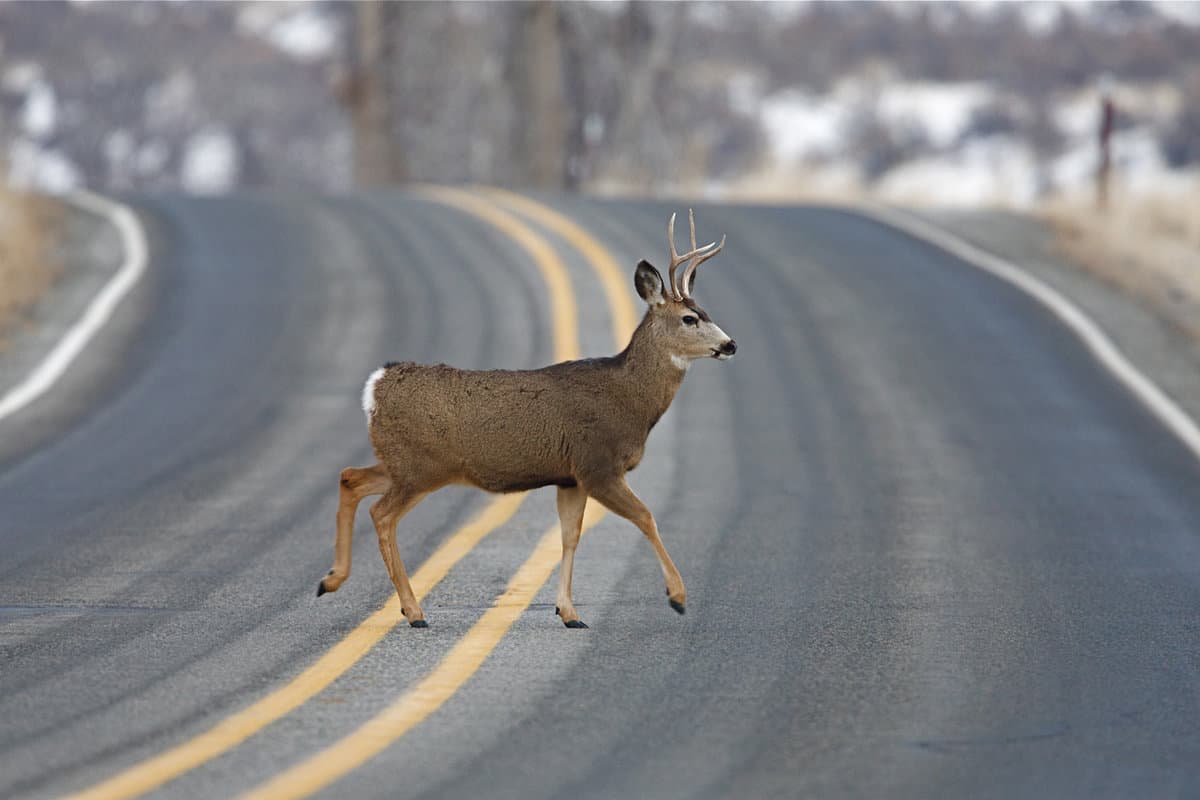
Brush guards, on the other hand, are much more effective at protecting you and your vehicle in the event of a deer strike. Since brush guards wrap around the entire front end of the vehicle, they provide significantly more collision protection.
With that said, it's worth noting that the presence of a bush guard does not guarantee that your vehicle won't suffer any damage in the event of a deer strike. At higher speeds, you can still expect some damage, but the vehicle will fair much better than it would had it been equipped with a bull bar.
Will Bull Bars Interfere With Parking Sensors?
It's safe to assume that most bull bars will interfere with your vehicle's front parking sensors. Your parking sensors might not become outright unusable, but a bull bar might constantly feed the system with erroneous obstacle information, and/or it might simply block the sensors from detecting real obstacles.
Do Brush Guards Affect Gas Mileage?
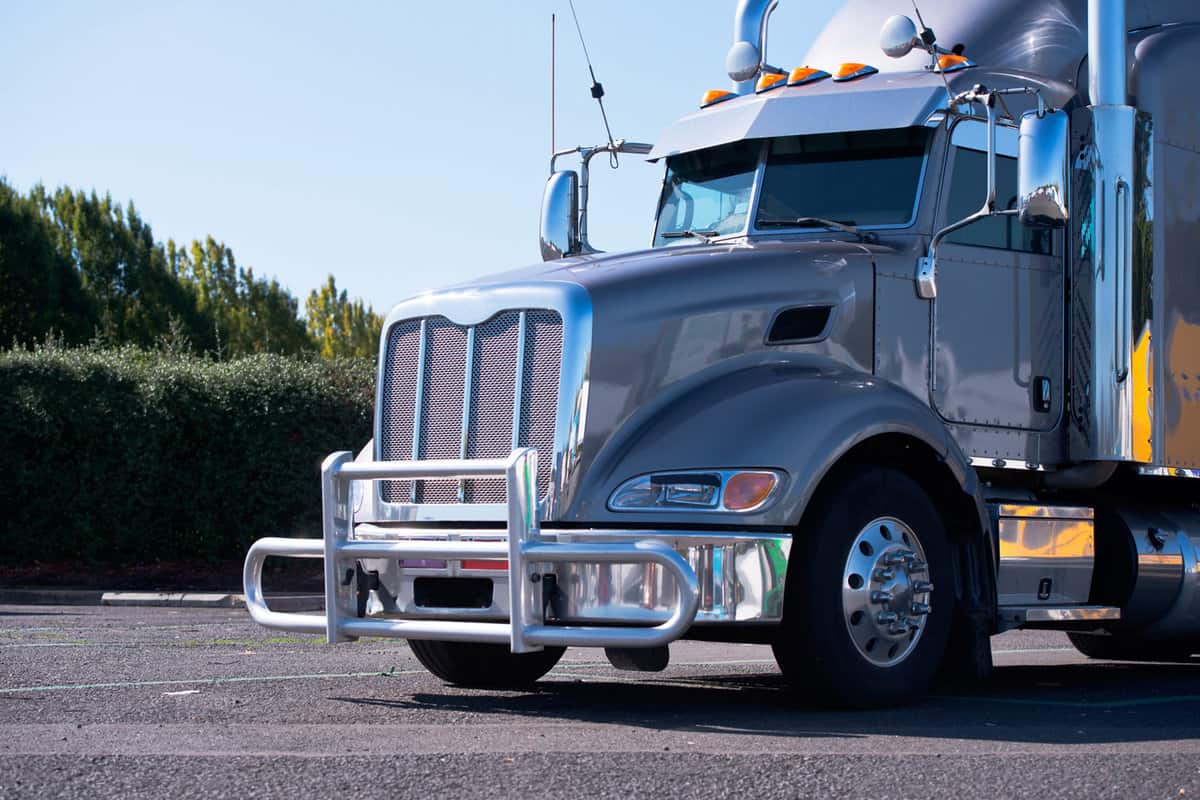
Technically speaking, brush guards will adversely affect gas mileage to some extent. Brush guards will create more drag than your vehicle would otherwise create, and this will reduce a vehicle's fuel efficiency.
Additionally, a brush guard is added weight. Added weight means more engine power is required to move the vehicle, and this results in decreased fuel efficiency.
However, this decrease in fuel economy will be negligible at most. Though this piece of equipment will technically render a vehicle less fuel efficient, this difference likely won't be perceptible in any significant way.
Do Brush Guards Affect Airbags?
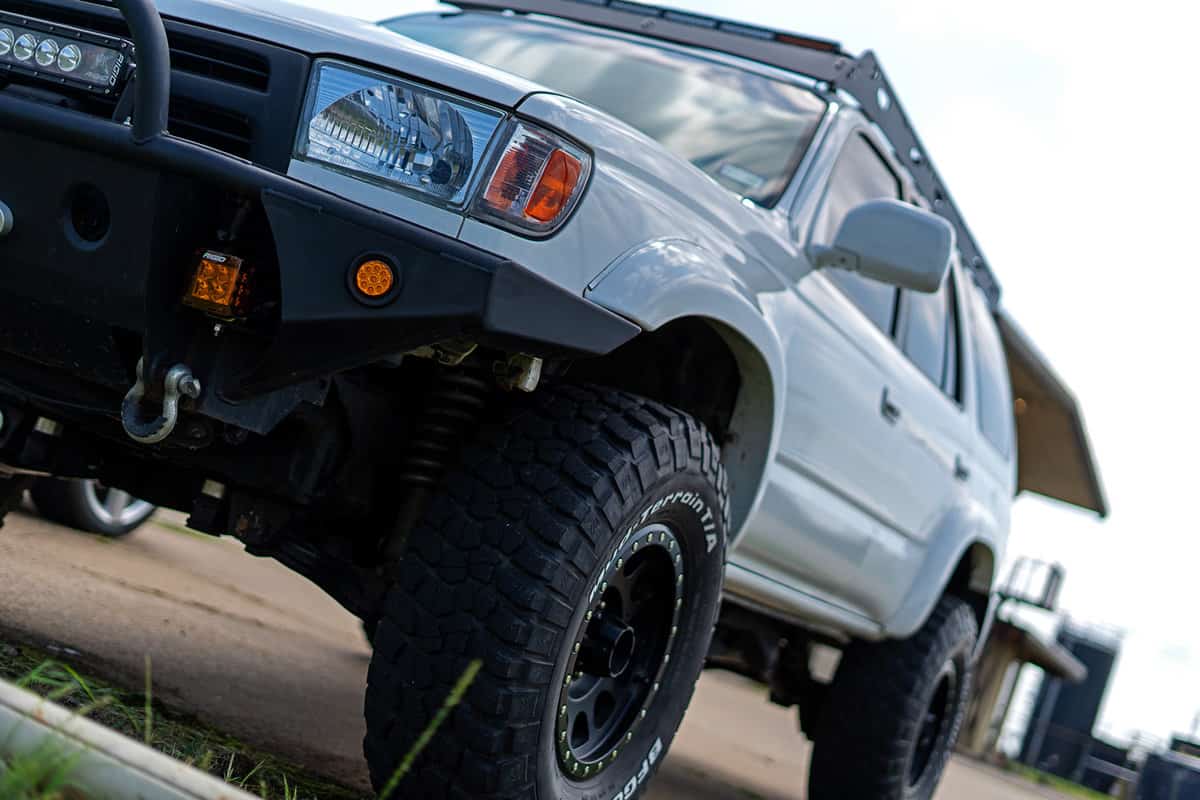
One concern that many motorists share regarding brush guards and bull bars is that they might interfere with airbag deployment. Simply put, a vehicle's airbags are triggered when certain areas sustain impact and crumple.
Depending on the vehicle, the bull bar or brush guard, and the area of impact, it's possible that this piece of equipment might prevent the successful deployment of the vehicle's airbags.
If you want to add this accessory to your vehicle, it's a good idea to consult with your vehicle's manufacturer to inquire about whether there are any bull bars/brush guards that are guaranteed to not impede airbag operation in your specific vehicle.
It's also worth discussing this point from an insurance perspective. If your vehicle has a bull bar/brush guard that inhibits the successful deployment of your vehicle's airbags in the event of an accident, any resultant injuries could potentially not be covered.
In Closing
We hope this guide has helped you understand the differences between bull bars and brush guards. Remember, the two aren't interchangeable; they are quite different.
Before you go, be sure to check out these other related guides:
How Much Does It Cost To Install A Bull Bar In The US?

Looking for a Brush Guard for a 2004 Ford Maverick pickup